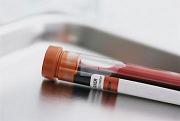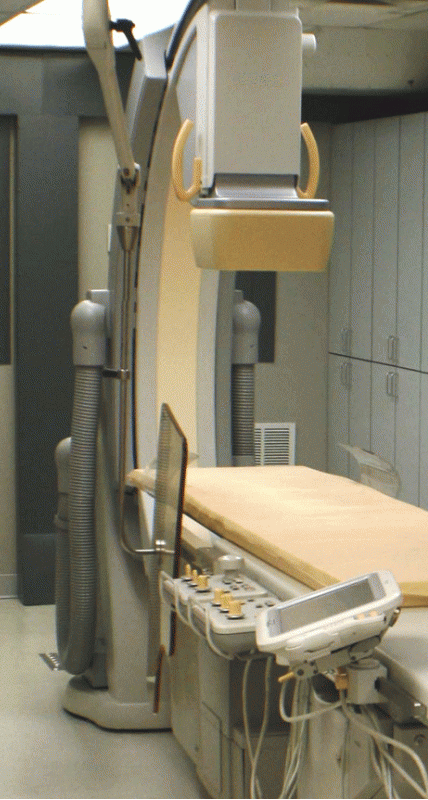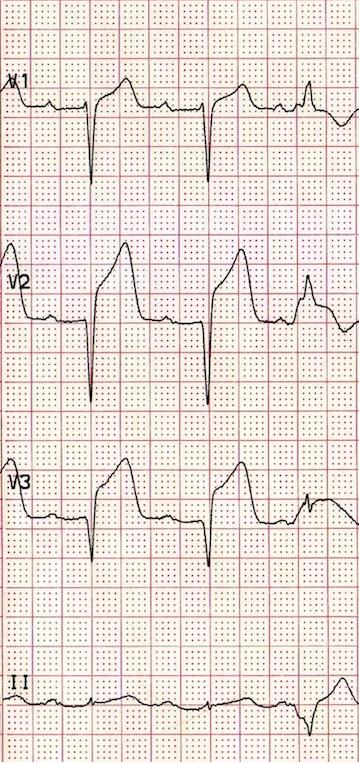Patient Preparation
Preparing the patient is an important part of the Cardiac Catheterization. Key information can be obtained and the procedure itself can be optimized with proper patient preparation.
- Welcome the Patient- It is natural for the patient to be nervous. Show confidence and understanding with your greeting. The first impression can determine the course of the patients visit.
- Patient Identification- Identify the right patient for the right procedure. Many institutions now require that outpatients present a picture i.d. in order to confirm patient identification. After confirmation, the patient's i.d. bracelet should be reviewed for correct name and date of birth and then applied to a wrist before any other steps are taken.
- Obtain Vital Signs- Baseline vital signs: blood pressure, heart rate and rhythm, respiratory rate and pulse oximetry are important to know before the procedure. These baseline values can help to determine if vital signs during the procedure are trending toward a complication.
- Obtain 12-lead ECG- If a current copy is not available, a baseline ECG will also be valuable information for the procedure in recognizing any changes that can take place.
- Review History- Ask the patient about their previous medical history. Complete a Head to Toe Medical history and record of any surgeries. Ask if the patient has had a prior cardiac catheterization, and or cardiac bypass surgery. Ask if the patient has any of the cardiac risk factors such as: Diabetes, family history, elevated cholesterol, hypertension, and tobacco use.
- Review Medication Record- Complete a copy of the patients home medication record that includes: medication, dose, route, frequency, and when last taken. Important medications to be watchful for are Coumadin (Warfarin), Glucophage (Metformin), and Viagra. These medications can lead to complications associated with the cardiac catheterization.
- Verify Allergies- It is important to know what the patient is allergic to so that these medications can be avoided. Ask the patient if they are allergic to IV dye, Iodine, or shellfish products. If so then they will need to be premedicated prior to their procedure.
- Review Current Lab Results- Just like baseline vital signs, recent lab results are important to know prior to the procedure. Abnormals will need to be addressed prior to the procedure. Severe abnormals may postpone the procedure to another day. These are just some of the measures to prevent the complications associated with cardiac catheterization.Click on the Lab work icon below to review normal Laboratory values.

- Check peripheral pulses- Since the procedure involves a puncture of the arterial system, baseline peripheral pulses will be important to compare with post procedure assessment.
- Check pregnancy status- Female patients of child bearing age should be asked about pregnancy status, history of last menstrual period, or history of hysterectomy.
- Verify that IV site is patent- A patent 18 gauge or 20 gauge IV should be in place or inserted prior to the procedure to ensure that IV fluids and medications can be administered. The left arm is the preferred site since the operators usually work on the right side. Check to see if there are any contraindications to left arm access such as: diaylsis shunt/graft or mastectomy. IV fluids should be started (usually Normal Saline 0.9% 1 Liter at KVO) unless contraindicated. Dialysis patients should have smaller bags infusing during the procedure to avoid fluid overload.
- Verify NPO status- The patient should be NPO (nothing by mouth) for a minimum of 6 hours prior to their procedure. This reduces that risk of aspiration of stomach contents into the airway during the procedure.
- Verify that necessary paperwork is completed- Consent forms must be completed and signed by the patient prior to the procedure. Other forms of documentation, including pre-procedure non-invasive testing should be present for the physician to review. If the patient has had a previous cardiac catheterization or cardiac bypass surgery, copies of these reports should be on file to be reviewed.
- Review procedure with patient- Explain what will happen to the patient during the procedure. Be sure to use easy to understand verbage. It is important to review with the patient that post-procedure recovery can take at least 4 - 6 hours. This sometimes comes as a shock. Ask the patient if they have any questions about their procedure. It is sometimes useful to include a family member during the explanation process.
- Administer premedications as ordered- Patients with IV contrast/dye allergies will need to be pre-medicated prior to cardiac catheterization. This includes Benadryl 50 mg IV, Pepcid 20 mg IV, and Solucortef 100 mg IV. Patients with elevated creatinine and diminished renal function may require: Mucomyst 1200mg PO and IV hydration with 3 amps of Sodium Bicarbonate in 1 Liter of Sterile Water.
References
- Baim, D.S. (2005) Grossman's Cardiac Catheterization, Angiography, and Intervention. (7th ed.). Philadelphia,Pa: Lippincott, Williams & Wilkins.
- Kern, M. et al (2003) The Cardiac Catheterization Handbook (4th ed.). Philadelphia, Pa: Mosby.
Click NEXT to proceed to Room Prep and Procedure Set-up
Next


